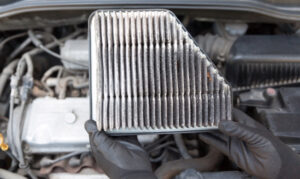Introduction
Welcome to our blog post on fuel pump check valve issues. In this post, we’ll be discussing the symptoms of a faulty check valve, as well as the steps you can take to diagnose and fix the problem. We’ll also be providing some helpful tips and precautions to keep in mind while working on your fuel pump.
Symptoms of a Faulty Check Valve
One of the most common symptoms of a faulty check valve is a loss of power or stalling while driving. This can be caused by fuel not flowing properly through the pump, which can be a result of a clogged or malfunctioning check valve. Other symptoms include difficulty starting the engine, a rough idle, and a decrease in fuel efficiency.
Steps for Diagn
The first step in diagnosing a faulty check valve is to check the fuel pressure. This can be done by using a fuel pressure gauge to measure the pressure at the fuel rail. If the pressure is lower than the specified range for your vehicle, it could be a sign of a problem with the check valve.
Another step is to check for any fuel leaks. A leaky check valve can cause fuel to leak from the pump, which can be a sign of a malfunctioning valve. You can check for leaks by inspecting the area around the pump for any signs of fuel residue or damage.
Steps for Fixing
To fix a faulty check valve, you will need to replace it with a new one. This can be done by removing the old valve and installing a new one in its place.
The first step is to remove the fuel pump from the vehicle. This can typically be done by removing the fuel tank, or by accessing the pump through the trunk or access panel.
Once the pump is removed, you can then remove the check valve. This can typically be done by removing a few screws or bolts that hold the valve in place.
Next, you can install the new check valve. Make sure to properly align the new valve with the pump and secure it in place.
Finally, re-install the fuel pump and test the vehicle to ensure the problem is fixed.
Precautions
When working on your fuel pump, it’s important to take certain precautions to ensure your safety. One of the most important things to keep in mind is to always work in a well-ventilated area, as fuel vapors can be dangerous.
It’s also important to make sure the vehicle is in a safe location, and that the battery is disconnected before working on the fuel system.
In addition, be sure to follow the manufacturer’s instructions when working on the fuel pump, and use the proper tools and equipment to avoid damaging the pump or other parts of the fuel system.
Conclusion
A faulty check valve can cause a variety of problems with your fuel pump, including a loss of power or stalling while driving. By understanding the symptoms and taking the appropriate steps to diagnose and fix the problem, you can help ensure that your fuel pump is working properly and keep your vehicle running smoothly. Remember to take all necessary precautions when working on your fuel pump, and if unsure or in doubt, seek professional help.
Thank you for reading and we hope this post has been helpful in understanding fuel pump check valve issues and the steps to take. Be safe and good luck!










